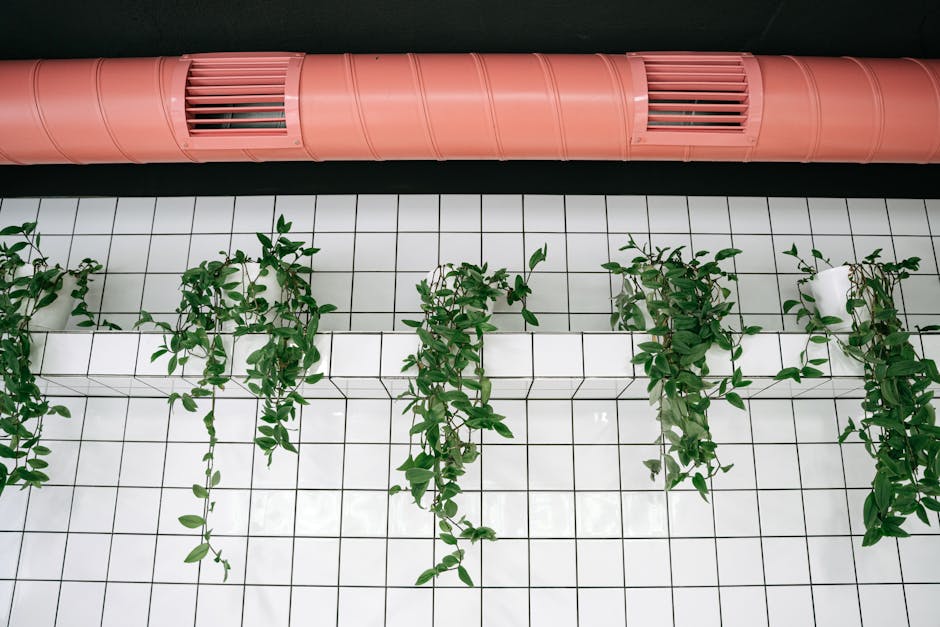Vertical Gardens for Urban Spaces
In the crowded urban centers of the world, space is a premium commodity. As cities grow and concrete expands, nature often gets pushed to the sidelines. But that doesn’t mean greenery has to disappear completely. Enter vertical gardens, an innovative solution that brings plants back into our lives, even in the tightest spaces. Whether you have a small apartment balcony or you’re part of a larger urban development project, vertical gardens can transform dull, gray walls into vibrant, living ecosystems.
What Exactly is a Vertical Garden?
A vertical garden, also known as a living wall or green wall, involves growing plants on a vertically suspended panel. They can be attached to either an interior or exterior wall and come in all shapes and sizes. The beauty of these gardens lies in their versatility. From simple DIY projects using recycled materials like wooden pallets to sophisticated hydroponic systems for large-scale buildings, vertical gardens offer a range of options to suit different needs and budgets.
The concept of vertical gardening isn’t new. Ancient civilizations such as the Babylonians had the Hanging Gardens of Babylon, one of the Seven Wonders of the Ancient World. Fast-forward to today, and architects and city planners are increasingly integrating green walls into modern urban environments as they search for sustainable design solutions.
Why Are Vertical Gardens Gaining Popularity?
Several factors explain why vertical gardens have captured the imagination of city dwellers:
- Space Efficiency: In dense urban areas where horizontal garden space is limited or non-existent, going vertical makes perfect sense. Plants can thrive on otherwise unused surfaces like walls and fences without taking up valuable floor space.
- Aesthetic Appeal: Concrete jungles aren’t exactly inspiring. Vertical gardens inject life into these areas, creating lush visual landscapes that can be therapeutic both for residents and passersby.
- Environmental Benefits: Green walls improve air quality by absorbing carbon dioxide and releasing oxygen. They also help cool down buildings by providing natural insulation, which can reduce energy consumption.
- Soundproofing: Believe it or not, plants can act as natural sound barriers. By absorbing sound waves, vertical gardens help reduce noise pollution in bustling city environments.

How Do Vertical Gardens Work?
At first glance, you might think vertical gardens require a lot of work or maintenance, but many systems are designed to be relatively low-maintenance once they’re set up properly. The way these gardens work can vary depending on the method used:
- Pocket Systems: These are simple fabric or felt pockets that hang on a wall where individual plants are placed. This is a great option for smaller projects since it's affordable and easy to install.
- Tray Systems: In this approach, plants are grown in modular trays that stack on top of one another. Tray systems offer flexibility because they can easily be rearranged if needed.
- Hydroponic Systems: For larger-scale installations or those seeking advanced technology, hydroponic vertical gardens use water instead of soil to deliver nutrients directly to plant roots. This method allows for faster growth and uses less water than traditional soil-based gardening.
No matter which system you choose, it’s important to consider the type of plants you’ll use based on your environment. Plants like ferns, succulents, herbs, and small flowering species tend to do well in vertical setups because they don’t require deep root structures.
The Practical Benefits in Urban Spaces
The advantages of having greenery in urban spaces go beyond just aesthetics.
- Tackling Air Pollution: Cities often suffer from poor air quality due to vehicle emissions and industrial activity. A study by NASA demonstrated that indoor plants could remove up to 87% of toxins in just 24 hours (nasa.gov). Vertical gardens extend this benefit outdoors by acting as natural air purifiers on a larger scale.
- Mental Health Boost: There’s plenty of research supporting how access to nature positively impacts mental health. Studies have shown that exposure to greenery reduces stress levels and increases feelings of well-being (ncbi.nlm.nih.gov). Vertical gardens provide an opportunity for city dwellers who may not have access to parks or other green spaces to reconnect with nature.
- Energy Savings: Living walls act as an additional layer of insulation for buildings. According to a report published by Green Roofs for Healthy Cities (greenroofs.org), buildings with green facades experience lower energy costs due to reduced heat absorption through walls during summer months and heat retention during colder seasons.
A Few Challenges and How to Overcome Them
No innovation is without its hurdles, and vertical gardening is no exception. One common concern is water management; after all, ensuring that plants get enough water while preventing overwatering or leaks can be tricky when they’re growing vertically. Luckily, modern systems often come equipped with irrigation setups specifically designed for efficient water usage.
An important point often overlooked is plant maintenance, yes, even though vertical gardens can be low-maintenance once established, they still require some level of care. Regular pruning and replanting may be necessary depending on what you’ve chosen to grow. But compared with traditional gardening methods, the upkeep tends to be far more manageable.
Where Do We Go from Here?
The popularity of vertical gardens shows no sign of slowing down as more people recognize their potential benefits, not just for personal enjoyment but also as vital tools for urban sustainability initiatives worldwide. For example, Singapore has embraced green architecture so wholeheartedly that it now boasts over 200 hectares of skyrise greenery (bca.gov.sg). Meanwhile, European cities like Paris have introduced incentives for installing green walls as part of their broader environmental goals.
If you’ve been thinking about introducing more greenery into your home or local area but don’t know where to start, why not give vertical gardening a try? With so many flexible options available today (from simple DIY creations using recycled materials all the way up to complex automated systems) it’s never been easier (or more rewarding) to bring nature back into our concrete-filled lives.